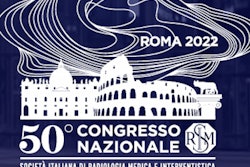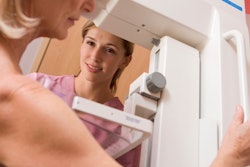
Two Italian medical societies have joined forces to develop a position paper on breast imaging follow-up of women with a history of breast cancer. A key recommendation is dedicated follow-up for at least 10 years.
The Italian Group for Mammography Screening (GISMa) and the Italian College of Breast Radiologists (ICBR) by the Italian Society of Medical Radiology (SIRM) crafted the document at the end of a joint workshop at the GISMa annual meeting. The guidelines were published in La Radiologia Medica (6 September 2016).
 Dr. Francesco Sardanelli, professor and director of the department of radiology at the Research Hospital Policlinico San Donato in Milan.
Dr. Francesco Sardanelli, professor and director of the department of radiology at the Research Hospital Policlinico San Donato in Milan.The collaboration is important because GISMa is a multidisciplinary society that includes radiologists, epidemiologists, pathologists, surgeons, and others focused on organized population-based breast cancer screening. The ICBR/SIRM is the breast section of the general professional radiological association, including the large majority of radiologists in Italy, noted corresponding author Dr. Francesco Sardanelli, a professor of radiology and the director of the department of radiology at the Research Hospital Policlinico San Donato in Milan.
"Women who were previously treated for breast cancer are an important particular subgroup of women at intermediate breast cancer risk," he and his colleagues wrote.
The authors recommend planning breast follow-up, taking into consideration a 1.0% to 1.5% annual rate of locoregional recurrences and new ipsilateral or contralateral breast cancer during 15 to 20 years, and basing it on a regional/district invitation system.
Why this subgroup?
In Italy, last year the number of female breast cancer survivors was about 693,000, equal to 2.2% of the female population and 42% of overall cancer prevalence among women, according to the Italian Association of Cancer Registries. After conservative treatment, a peak of ipsilateral true locoregional recurrences is observed during the first five years and, in particular, the first two years, according to the authors.
The risk of a new primary contralateral breast cancer and its cumulative incidence increase over time: The majority of these events are observed after the first five years of follow-up, they added.
Sardanelli and colleagues identified an early peak of breast cancer events, which they think biased guidelines and recommendations issued by medical societies and governmental agencies.
"A more intensive breast surveillance during the first three to five years and a subsequent less intensive surveillance have no rational bases," they explained.
Women with a history of breast cancer should be considered as an important particular subset of women with an intermediate breast cancer risk, lower than that of BRCA or mutation carriers, and higher than that of women with neither personal nor familial breast history, or with only sporadic breast cancer among their relatives, they added.
Core recommendations
There are many possibilities when it comes to follow-up: annual versus biannual mammography, clinical/radiological follow-up in a diagnostic context versus invitation to a population-based organized screening program, and more.
Sardanelli and colleagues maintain that follow-up of women previously treated for breast cancer should be active -- using a centralized invitation system but with communication among centers, as some women are treated at major hospitals or centers but live in different regions.
Screening and clinical breast imaging should be offered by the same radiology department of a breast unit. "The current implementation of the breast units in Italy and their connection with screening programs has to be considered a transition process," they continued.
In an email to AuntMinnieEurope.com, Sardanelli wrote, "We know that to do what we designed all over the Italian regions will be not easy, but there are several centers where things are organized in the way we defined."
The defined protocol the authors are advocating is as follows:
- Investigation of personal and familial histories to identify high-risk conditions for which a different screening strategy should be adopted
- Clinical breast examination and possible breast ultrasound performed by a breast radiologist in the case of bilateral mastectomy
- Immediate mammogram reading by a breast radiologist or, when possible, by two breast radiologists
- Immediate performance of supplemental investigations, such as tomosynthesis and needle sampling
- Fast scheduling (preferably within 10 working days) of further workup including, if indicated, MRI
The key point, though, is immediate communication of the results of the session to the woman, possibly with personal interaction between the breast radiologist and the woman and with a written report, according to the authors.
Also, the follow-up duration should not be shorter than 10 years and will be defined on the basis of the woman's age and preferences.
In three years, GISMa and ICBR/SIRM will evaluate how well the recommendations have been implemented in Italy through surveys among their members.
The groups are now collaborating on a second position paper on digital breast tomosynthesis.


















